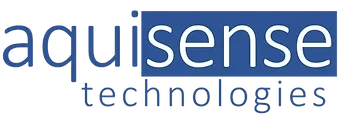Resources
Our featured brands have a long history
of being implemented both within
and outside of the laboratory.
Go To

Kinetics of inactivation and photoreactivation of Escherichia coli
Ultraviolet (UV) disinfection is highly recommended owing to its high disinfection efficiency and disinfection by-products free, and UV Light-Emitting Diodes (UV LEDs) is increasingly becoming an alternative of mercury UV lamps for water disinfection owing to its long lifetime, low input power, and absence of problems on disposal. However, renovation of existing UV lamps faces the challenges for UV disinfection associated with disinfection...
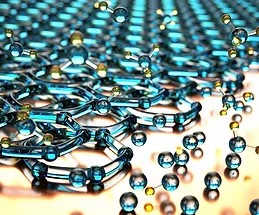
A green approach for the reduction of graphene oxide
A green approach for the reduction of graphene oxide (GO) using wild carrot root is reported in this work. It avoids the use of toxic and environmentally harmful reducing agents commonly used in the chemical reduction of GO to obtain graphene. The endophytic microorganisms present in the carrot root, reduces exfoliated GO to graphene at room temperature in an aqueous medium. Transmission electron microscopy and atomic force microscopy images provide clear...

Wavelength-dependent chlorine photolysis and subsequent radical production
UV-LEDs are considered as the most promising UV light sources, because it has the potential to replace conventional UV lamps in some water treatment applications in the foreseeable future. In this study, UVLEDs at four wavelengths in the UV-C or near UV-C range (i.e., 257.7, 268, 282.3, and 301.2 nm) were used to investigate the wavelength-dependency on chlorine photolysis and its subsequent radical formation. The fluence-based photodecay rates of hypochlorous acid...

Temperature and salinity correction coefficients for light absorption by water
The light absorption coefficient of water is dependent on temperature and concentration of ions, i.e. the salinity in seawater. Accurate knowledge of the water absorption coefficient, a, and/or its temperature and salinity correction coefficients, ΨT and ΨS, respectively, is essential for a wide range of optical applications. Values are available from published data only at specific narrow wavelength ranges or at single wavelengths in the visible and infrared...

Raman spectroscopic characterization of light rare earth ions
Raman spectra of aqueous La3+, Ce3+, Pr3+, Nd3+ and Sm3+ – perchlorate solutions were measured and weak strongly polarized Raman bands were detected at 343 cm−1, 344 cm−1, 347 cm−1, 352 cm−1 and 363 cm−1, respectively. The full width at half height for these bands is quite broad (∼50 cm−1) in the isotropic spectrum and the band width increases with increasing solute concentration. The polarized Raman bands were assigned to the breathing modes of the nona-aqua ions of the mentioned rare earth ions...

Bright blue-shifted fluorescent proteins with Cys
Near-infrared fluorescent proteins (NIR FPs) engineered from bacterial phytochromes (BphPs) are of great interest for in vivo imaging. They utilize biliverdin (BV) as a chromophore, which is a heme degradation product, and therefore they are straightforward to use in mammalian tissues. Here, we report on fluorescence properties of NIR FPs with key alterations in their BV binding sites. BphP1-FP, iRFP670 and iRFP682 have Cys residues in both PAS and GAF domains, rather than in the PAS domain alone as in wild-type BphPs. We found that NIR FP variants...

Spectral UV losses in 355 nm pulsed laser delivery system at low temperatures
Many applications of UV laser radiation at 355 nm wavelength are based on fiber optics. In the past, several details about multimode fiber properties at this wavelength have been investigated [1–3]. The commonly used UV fibers consist of an undoped synthetic silica core and a Fluorine-doped silica cladding, surrounded by a polymer coating. The basic attenuation of these fibers at 355 nm is typical in the order of 0.2 dB/m, while the nonlinear attenuation due to two photon absorption was estimated to be less than...

Silica-based UV-fibers for DUV applications: current status
The current status of UV-damage in several different UV fibers due to defects in their synthetic high-OH silica core and cladding will be described. Further, steps to improve UV resistance and adequate measurement techniques based on a deuterium lamp setup are included. For the first time, the main parameters and their influences on UV induced losses are discussed in detail with an emphasis towards future standardization purposes. Applications based on two new UV light sources...

Evaluation of minor element concentrations in potatoes using laser-induced breakdown spectroscopy
We have performed spectroscopic analysis of the plasma generated by Nd:YAG laser irradiation of flesh and skin of fresh potatoes. From the spectra recorded with an Echelle spectrometer 11 minor elements have been identified. Their relative concentrations were estimated by comparing the measured spectra to the spectral radiance computed for a plasma in local thermal equilibrium. According the moderate plasma temperature of about 6500 K at the time of spectroscopic observation, the electrons are...
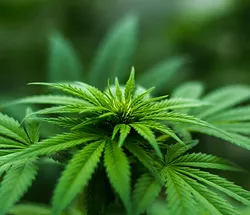
Validation of the PURPL Pro for flower potency measurement
As the commercial cannabis industry continues to surge, additional pressures mount to regulate and maintain the safety of the cannabis products offered to the public. Of primary importance in nearly all legislated markets is the need to accurately define the potency of each product prior to its consumption. Just as pharmaceutical products are mandated to list the strength of their active ingredients, so, too is cannabis required to indicate the strength of THC and...

The cannabinoid content of legal cannabis in Washington State
The majority of adults in the U.S. now have state-legal access to medical or recreational cannabis products, despite their federal prohibition. Given the wide array of pharmacologically active compounds in these products, it is essential that their biochemical profle is measured and reported to consumers, which requires accurate laboratory testing. However, no universal standards for laboratory testing protocols currently exist, and there is controversy as to whether all reported results are...

Portable cannabis potency test launched
The world's first portable, instant cannabis potency testing solution has been developed by a U.S. company which specializes in testing of cannabis for its biochemical properties. The technology is based around a smartphone. The new device comes from the biotechnology company Purpl Scientific (based in St. Louis, U.S.) Purpl PRO converts a smartphone into a cannabis potency testing system. The add-on is able to deliver a breakdown of the constituents of the cannabis within ten...
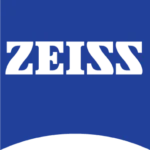
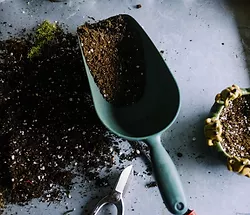
Towards development of on-line soil moisture content sensor using a fibre-type NIR spectrophotometer
As the soil moisture content (w) is a deterministic factor for site-specific irrigation, seeding, transplanting and compaction detection, an on-line measurement system will bring these applications into practice. A fibre-type visible (VIS) and near-infrared (NIR) spectrophotometer, with a light reflectance measurement range of 306.5–1710.9 nm was used to measure w during field operation. The spectrophotometer optical unit was attached to the subsoiler chisel backside to perform the light reflectance measurement from the soil surface on the bottom...
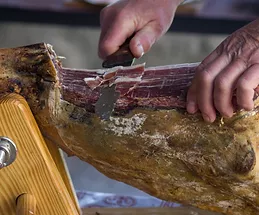
Perspective of NIRS measurements early post mortem for prediction of pork quality
The potential of near-infrared spectroscopy (NIRS) measurements early post mortem was investigated to predict ultimate drip loss, colour, tenderness and intra-muscular fat of pork. Three locations (M. longissimus thoracis, M. longissimus lumborum and M. semimembranosus) in 102 pig carcasses were tested at the end of the slaughter line. A priori variation in pork quality was introduced using an experimental design covering: genotype, lairage time, pre-slaughter handling and day of slaughter. At 1 h post mortem a diode array VIS/NIR instrument...


